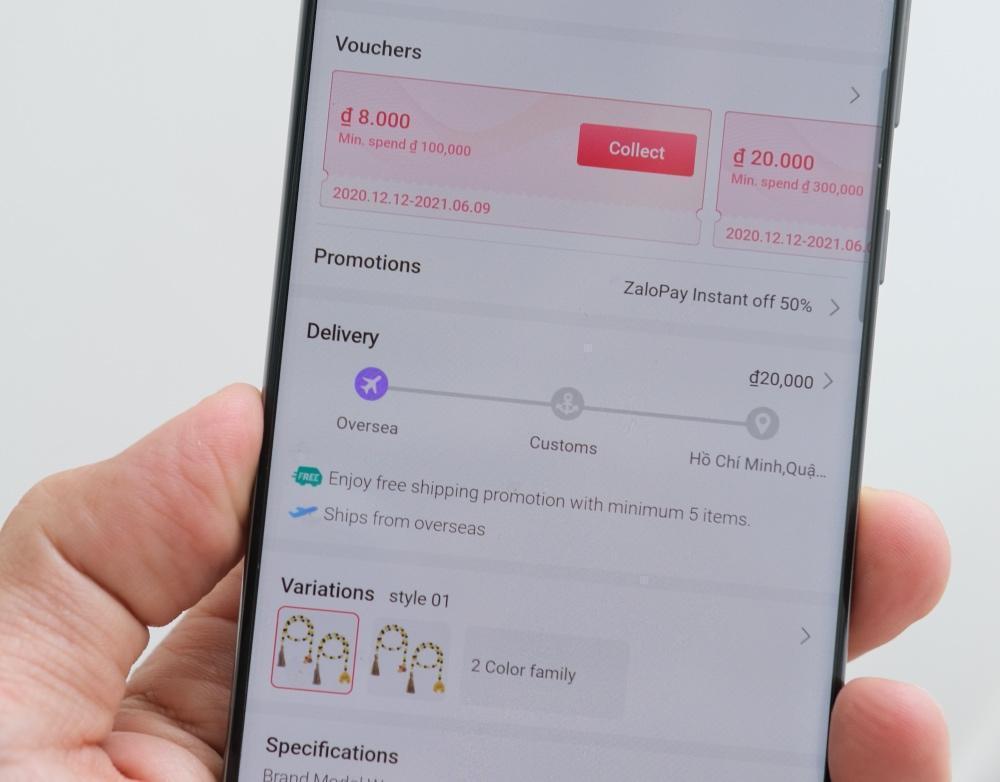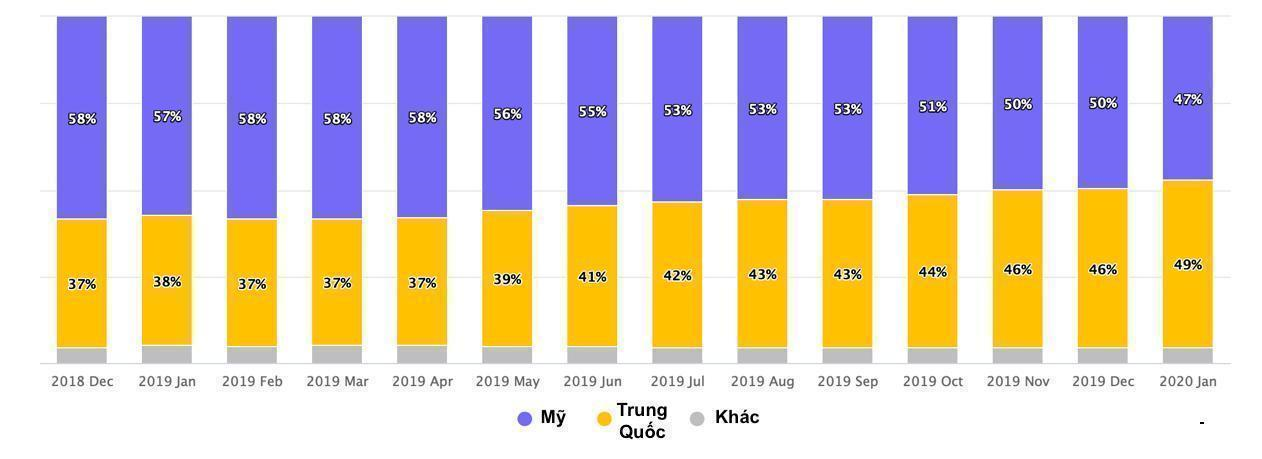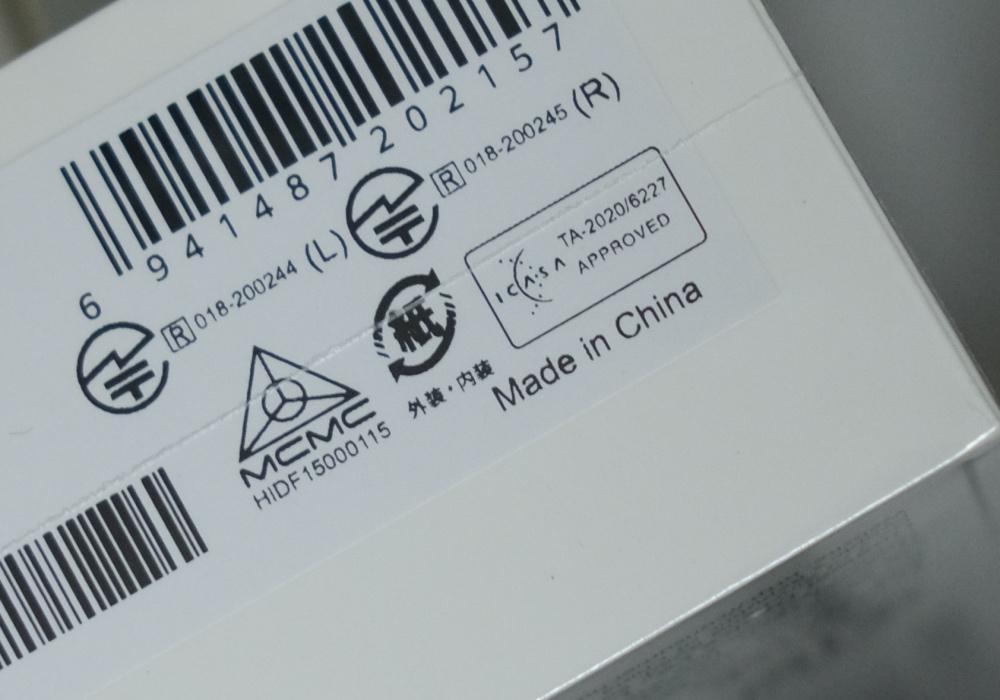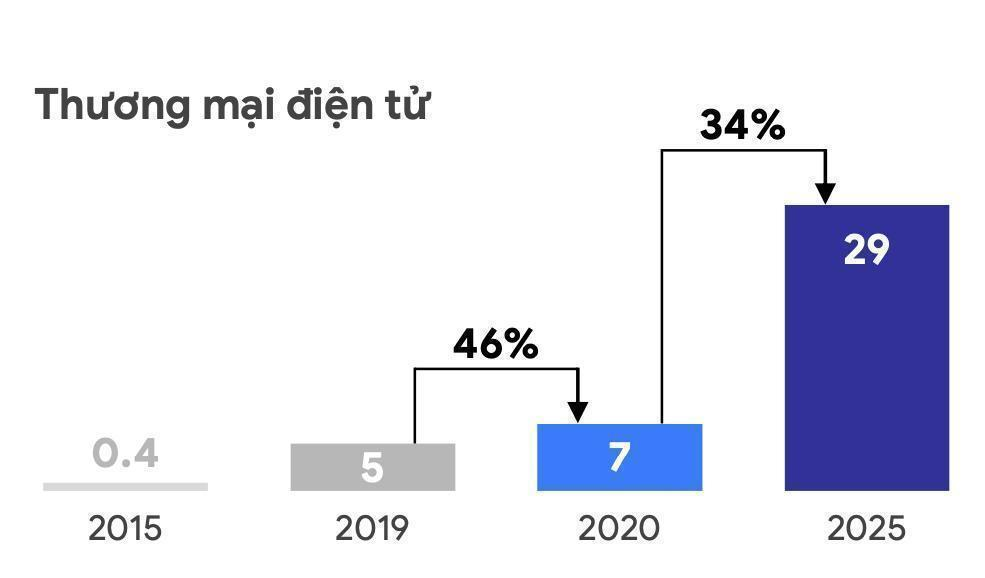Ms. Uyen from Ho Chi Minh City is an example of a customer who has sought items from overseas online sites. She has recently turned to buying dresses and lipsticks from Chinese sellers on Shopee, an online shopping platform. Uyen said that fashion products from China are cheap, with diverse models, and the shipping cost is cheap.
“A dress in China is priced for around VND100,000, while Vietnamese products of the same kind are sold from VND200,000-VND300,000. A lipstick in China is priced a few ten-thousands dong. Products are very diverse in designs. Shipping fees from China to Vietnam are only about VND17,000, and down to just VND7,000 or even VND2,000 if the bonus code is used. Delivery fees from Hanoi to Saigon are sometimes up to VND40,000," Uyen explained.
Many Vietnamese customers are buying goods from China via e-commerce sites like Shopee, Lazada, and Tiki. Fashion products, cosmetics, phone accessories, home decorations, stationery, gardening tools and others, with diverse designs from foreign sellers, are ready to serve domestic needs.
Global landing of Chinese goods

Shipping fees for goods ordered from China to Vietnam can be as low as VND20,000 (less than$1). (Photo: Hai Dang)
A source from Lazada told VietNamNet that there are tens of thousands of foreign sellers on the site, but he did not reveal the specific number. Meanwhile, an e-commerce site - Sendo - said they have about 500,000 sellers.
Alibaba and Tencent have large stakes in Lazada and Shopee. Tiki also takes capital from JD.com. Therefore, the fact that goods from China are available on these floors is easy to understand. Through Lazada and Shopee, Chinese goods are available throughout Southeast Asia.
In fact, Vietnam is among the countries that is behind others in cross-border e-commerce.
Ms. Quah Mei Lee (Frost & Sullivan) said that cross-border e-commerce in Southeast Asia is small, and is expected to account for about 10% of the world market by 2025. But it is a market with huge potential. Vietnam, Indonesia and the Philippines are listed in the very challenging market group, while Singapore, Thailand and Malaysia are the main development markets.
Even on Amazon, Marketplace Pulse’s statistics show that among the top sellers, China has surpassed the US. Specifically, in January 2020, the number of Chinese stalls accounted for 49% compared with 47% from the US. Two years earlier, China accounted for only 37% compared with 58% from the US. This statistic is about the top 10,000 sellers with sales of $1 million or more on Amazon.

The proportion of Chinese sellers in the top 1,000 businesses on Alibaba has increased sharply. (Source: Marketplace Pulse)
Among the top 100,000 sellers, China accounted for 58%, the US 36%. However, of the top 1 million sellers, China accounted for only 37% and the US 50%, and the rest were sellers from other countries.
In India, a country with a movement to boycott Chinese goods, the Ministry of Commerce and Finance decided to ask Amazon, Flipkart and many other e-commerce platforms to attach country of origin to goods sold on these sites. Since August 1, 2020, these online shopping sites have gradually added the country of origin for goods.
Cross-border e-commerce here to stay

"Made in China" products cover the whole world, not just Vietnam. (Photo: Hai Dang)
E-commerce has become a lever to help Chinese goods circulate globally. Thanks to these platforms, Vietnamese goods also have the opportunity to expand their markets to the world.
Mr. Tran Thanh Hai, Deputy Director of Import and Export Department (Ministry of Industry and Trade), said that cross-border e-commerce is a trend that now exists on a global scale. Vietnamese businesses need to seize the opportunity to exploit the scale of exports worth up to $200 billion.
Currently, the number of Vietnamese businesses joining global e-commerce platforms is increasing. According to statistics, there are about 1,000 businesses on Alibaba and about 200 on Amazon. In particular, the number of Vietnamese sellers with sales exceeding $1 million on Amazon increased by three times in 2020.
Ms. Dang Tuyet Dung, Director of Visa in Vietnam and Laos, told VietNamNet that after the outbreak of Covid-19, payments made on domestic and cross-border e-commerce sites increased many times compared to the previous time. Vietnamese put money into services of Google and Facebook, and bought goods on Amazon.

The scale of e-commerce in Vietnam is expected to reach $29 billion by 2025. (Source: Google)
Under the impact of Covid-19, Vietnam’s e-commerce grew at a rate of 35% last year. Cross-border e-commerce in Vietnam is among the fastest-growing in Asia Pacific.
However, Mr. Tran Thanh Hai recommended that, in addition to opportunities brought about by global integration, Vietnamese businesses also face international competition.
Ms. Dang Tuyet Dung said that when participating in global business, local businesses need to know the way platforms operate, the payment methods, and international payment assistance.
“Another important thing is prestige. Enterprises, whether doing business domestically or internationally, need to ensure the quality of goods and services in order to compete,” Dung said.

Vietnamese businesses need to take advantage of their own strengths to compete with foreign goods. (Photo: Hai Dang)
This is also the approach of many businesses when facing competition from cheap goods from China. For example, in the US, businesses are advised to increase product quality, use the label Made in USA as a brand, and at the same time ensure the quality of goods by certification granted by prestigious agencies of the country such as USDA, EPA and CPSC.
Another advantage of domestic goods is also the ability to deliver quickly. Cross-border goods usually take a week or more to reach customers. Domestic firms are therefore advised to speed up delivery in order to compete with foreign goods.
Vietnam is considered a country with great potential to develop cross-border e-commerce thanks to its advantages in the manufacturing industry, and an abundant supply of labor, with many young talents and a large online community.
However, to develop this field, Dr. Vu Duy Nguyen, from the Faculty of Tax and Customs at the Academy of Finance, proposed that the Ministry of Industry and Trade replicate the model to support connections between domestic businesses and major e-commerce platforms in the world such as Alibaba, Amazon and Ebay.
Cross-border e-commerce opens up opportunities for Vietnamese products to be sold globally, but, along with it, is the entry of international goods into the domestic market. This is an opportunity for Vietnamese businesses to look back and adapt to the new business environment.
Hai Dang

Experts: E-commerce to grow solidly in 2021
Vietnam’s e-commerce market will maintain its solid growth trajectory this year, analysts said at a ceremony announcing Vietnam’s E-Business Index within the framework of the Vietnam Online Business Forum on Tuesday.

RCEP feared to pave the way for Chinese goods to flood Vietnamese market
Other RCEP-member economies have the same export products as Vietnam’s, so If Vietnam’s production capability does not improve, the domestic market will become a playing field for Chinese and other foreign products.